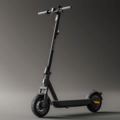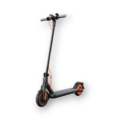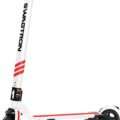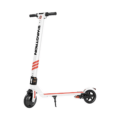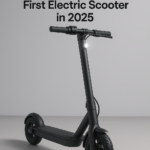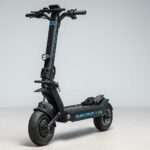- Home
- Scooters
- Electric Scooters
- Xiaomi Scooter 4 Lite Gen 2
Xiaomi Scooter 4 Lite Gen 2
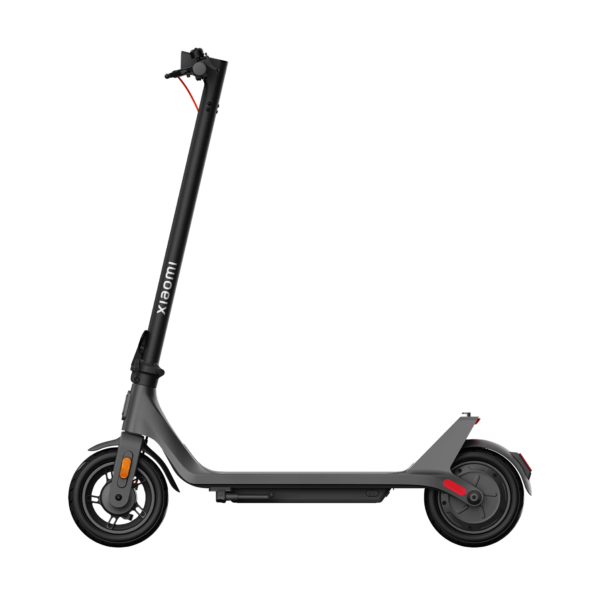

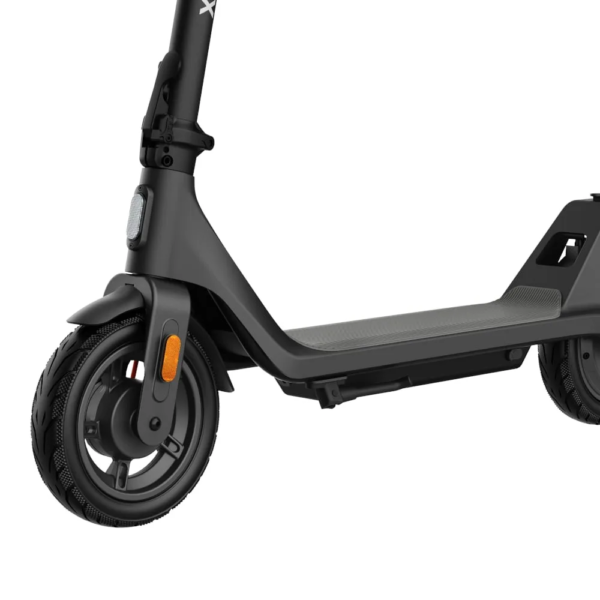
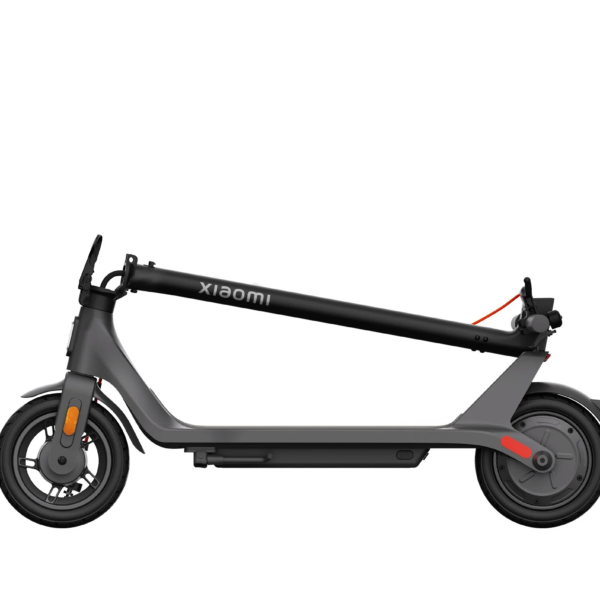
- Battery Range: 25 km (~15.5 miles)
- Top Speed: 25 km/h (15.5 mph)
- Motor Power: 300 W rated
- Weight Capacity: 100 kg (220 lb)
- Charging Time: 8 hours
- Scooter Weight & Portability: 15.4–16.2 kg (~34–36 lb)
PROS
- Lightweight and foldable design for portability
- App connectivity for lock, stats, and updates
- Solid braking system with front E‑ABS and rear drum
- Good build quality and battery protection
- Large 10" pneumatic tires for a stable ride
CONS
- No suspension system for shock absorption
- Limited top speed and power for steep hills
- No cruise control or NFC unlock
- Charging time is relatively long (≈8 hours)

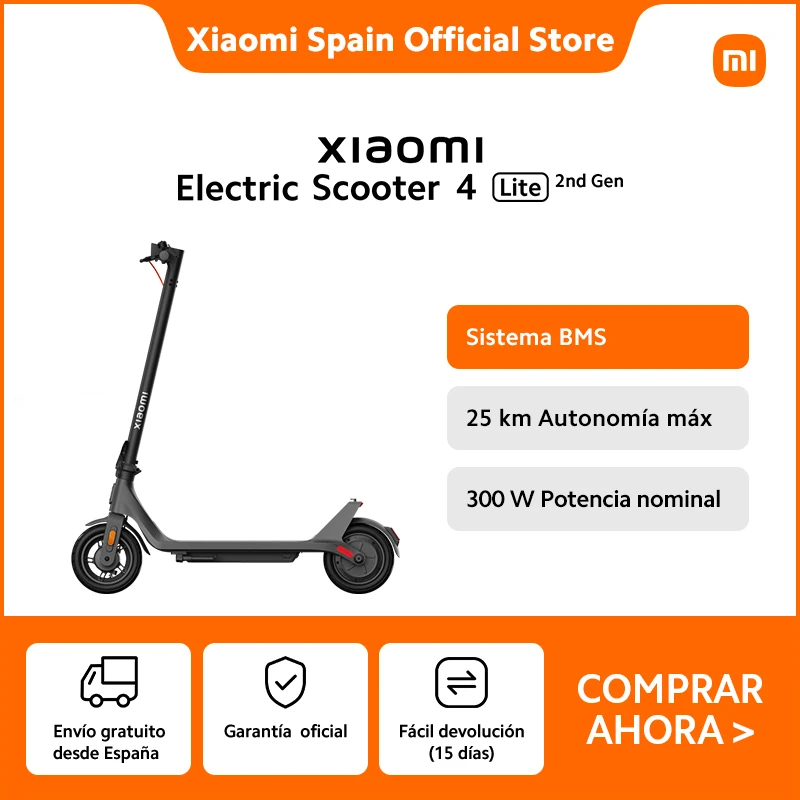
Xiaomi Scooter 4 Lite Gen 2 Electric Scooter Overview
The Xiaomi Scooter 4 Lite Gen 2 is a smart, light, and affordable electric scooter built for everyday urban use. With a top speed of 25 km/h and a peak motor output of 500 W, it delivers just the right amount of power for commuting, school runs, or short-distance errands. The scooter is perfect for city riders who want a reliable and easy-to-handle ride. Thanks to its 221 Wh lithium battery, you can ride up to 25 km on a single charge, making it suitable for most urban trips without range anxiety.
This second-generation model builds on Xiaomi’s reputation for simple design and dependable function. It stays within e-scooter speed laws in Europe and other regions and includes all the basic safety features you’d expect from a trusted brand. For a lightweight scooter, it offers plenty of value—especially if you’re upgrading from walking or public transport.
Lightweight and Travel-Friendly
One of the key features of the Xiaomi Scooter 4 Lite Gen 2 is its portability. Weighing just around 15 to 16 kg, it ranks among the lightest e-scooters in its class. Whether you’re climbing stairs, hopping on public transport, or loading it into a car trunk, the scooter remains manageable. Its three-step folding system is quick and easy to use, collapsing the scooter into a compact shape that fits well under desks, in office corners, or inside small closets.
The folding latch feels sturdy, and the handlebar locks securely into place when folded. This means you can carry the scooter without worrying about moving parts shifting unexpectedly. Riders living in apartment buildings or tight spaces will appreciate how little room it takes up.
Durable Tires and Ride Comfort
Despite not having a suspension system, the 10-inch air-filled pneumatic tires do a solid job of smoothing out rough surfaces. These tires absorb shocks from bumpy streets and curbs better than solid rubber tires, making the ride more comfortable. They also help with grip, which adds to the scooter’s overall safety on slick pavement.
The wide anti-slip deck offers enough space for both feet, allowing riders to maintain a natural stance while cruising. Even taller or heavier users will feel stable on the deck, which supports riders up to 100 kg (220 lb). Although the scooter doesn’t have suspension, the combination of large tires and solid frame design creates a surprisingly smooth experience for daily riding.
Performance and Climbing Power
With a rated motor output of 300 W and a peak output of 500 W, the Xiaomi 4 Lite Gen 2 isn’t built for racing—but it handles most city needs well. The acceleration is smooth and steady, with enough power to get moving quickly in standard or sport mode. The scooter also handles hills with inclines up to 15%, which is good enough for most urban inclines and short ramps.
You can switch between three ride modes: pedestrian (6 km/h), standard (15 km/h), and sport (25 km/h). Each mode offers a balance between speed and battery life. Pedestrian mode is great for shared pathways or crowded areas where slow riding is safer. Sport mode, on the other hand, gives you maximum speed for direct commutes.
Safety and Braking
Safety is well addressed with a dual braking system. The front brake uses an electronic E‑ABS (anti-lock) system that also captures regenerative energy. The rear drum brake provides solid mechanical stopping power. These two systems work together to deliver smooth and fast stops—even when braking suddenly.
When you hit the brakes, the rear LED taillight flashes to alert those behind you. Combined with front and side reflectors, the scooter remains visible in low-light conditions. The 2.1 W headlight lights up the road ahead for 2 to 8 meters, enough for night rides on city streets or lit bike paths.
Dashboard and App Integration
The Xiaomi Scooter 4 Lite Gen 2 has a simple and bright LED display on the handlebars. It shows your current speed, ride mode, and battery level. The display remains clear in daylight and dims at night for better visibility.
You can also pair the scooter with the Xiaomi Home app via Bluetooth. This gives access to features like motor lock/unlock, ride statistics, firmware updates, and battery health info. The app is easy to navigate and helpful for riders who want more data on their trips or prefer locking the scooter digitally when parked.
However, the scooter does not include features like cruise control, GPS, or NFC unlocking. These omissions are understandable given the lower price and entry-level positioning. Riders who need advanced features may want to look at Xiaomi’s more premium models.
Battery and Charging
The battery offers a maximum range of up to 25 km under ideal conditions. Most users can expect a range of 18–22 km, depending on rider weight, terrain, and mode selection. Charging takes about 8 hours with the standard charger. While not the fastest, overnight charging works well for most users who ride during the day and recharge at home.
The battery is protected by Xiaomi’s Smart BMS (Battery Management System), which includes six layers of safety: overcharge, over-discharge, temperature protection, short-circuit prevention, overvoltage, and overcurrent. This helps extend battery life and ensures safer use over time.
Real-World Use and Practicality
In real-world use, the Xiaomi 4 Lite Gen 2 delivers a smooth, quiet ride with just enough power for everyday tasks. It excels in short-range trips—commuting to class, running errands, or riding to work. It’s not made for long-distance travel or steep mountain paths, but it performs well within its design limits.
You can fold it up, carry it inside shops or offices, and charge it easily at home. The wide deck, smooth tires, and clean braking system make it accessible even for beginner riders. It’s ideal for teens, young professionals, or anyone needing a reliable second mode of transport.
Final Verdict
The Xiaomi Scooter 4 Lite Gen 2 is a well-balanced entry-level scooter. It covers all the essentials—speed, range, safety, app control, and portability—without overcomplicating things. While it doesn’t include cruise control, suspension, or advanced anti-theft tech, it gets the basics right. The build is solid, the tires are large and forgiving, and the price is fair.
If you’re a city rider looking to reduce car trips or make your last-mile travel faster and easier, the Xiaomi 4 Lite Gen 2 is an excellent option. It’s light, cleanly designed, and practical for everyday use.
Whether you’re heading to work, class, or the grocery store, this scooter gets you there safely and smoothly—no fuss, no noise, just convenience on two wheels.
Specifications
General
| Model The Model specifies the exact version or name of the scooter. It helps identify its unique design, features, and specifications within the manufacturer’s product line. Knowing the model makes it easier to compare options, find compatible accessories, or look up support information. | Scooter 4 Lite Gen 2 |
| Brand The Brand identifies the manufacturer or company that designs and produces the scooter. A trusted brand is a sign of quality, reliability, and good customer support. Well-known brands often have higher standards for safety, performance, and after-sales service, giving you more confidence in your purchase. | Xiaomi |
| Release Date The Release Date indicates when the scooter model was officially launched on the market. This helps you know how current the design, technology, and features are. A newer release date often means updated components, improved performance, and the latest safety or smart features. | 01 January 2023 |
| Recommended Age Recommended Age indicates the minimum age range that the scooter is designed for, based on safety, size, and ease of use. Following the recommended age helps ensure that riders can handle the scooter’s speed, weight, and controls comfortably and safely. Always check local laws and use protective gear, especially for younger riders. | 16–50 years |
Performance & Power
| Motor Power (Wattage) What it means: The motor power, measured in watts (W), shows how strong the scooter’s electric motor is. Why it matters: Higher wattage usually means better acceleration, more torque, and improved performance on hills or rough terrain. For example, a 250W motor is good for flat city roads and light riders, while a 500W or 1000W motor provides more power for faster speeds or climbing steep inclines. | 300 W rated, up to 500 W peak brushless motor |
| Top Speed The Top Speed indicates the maximum speed that the scooter can reach under optimal conditions. It’s usually measured on level ground with a fully charged battery and an average rider weight. A higher top speed allows you to travel longer distances faster, but always ensure you ride within legal speed limits and your personal comfort zone for safety. | 25 km/h (15.5 mph); modes: pedestrian (6 km/h), standard (15 km/h), sport (25 km/h) |
| Battery Capacity Battery Capacity refers to the total amount of energy the scooter’s battery can store, usually measured in ampere-hours (Ah) or watt-hours (Wh). A higher battery capacity means you can ride longer distances on a single charge, reducing the need for frequent recharging. Keep in mind that actual range can vary depending on rider weight, terrain, speed, and weather conditions. | 221 Wh (36 V, ~10.2 Ah / 9,600 mAh) |
| Estimated Range per Charge The Estimated Range per Charge indicates the average distance the scooter can travel on a single full battery charge. This range is calculated under optimal conditions, such as flat terrain, moderate speed, and average rider weight. Real-world range may vary depending on riding style, terrain, weather, and load. A longer range means fewer recharges and greater freedom for longer trips. | Up to 25 km (~15.5 miles) in Eco / standard mode |
| Hill Climb Ability Hill Climb Ability describes the maximum incline or slope that the scooter can handle while maintaining stable performance. It’s typically expressed as a percentage or in degrees. A higher hill climb rating means the scooter can tackle steeper hills without losing too much speed or power. Actual climbing performance may vary based on rider weight, battery charge, and terrain conditions. | Up to 15% incline (~8° slope) |
| Drive System The Drive System refers to how power from the motor is delivered to the wheels. Electric scooters typically use either a hub motor (directly integrated into the wheel) or a chain/belt drive system. A high-quality drive system ensures smooth acceleration, efficient power transfer, and low maintenance. The choice of drive system affects performance, noise level, and overall ride experience. | Rear-wheel hub motor (brushless) |
Charging & Electrical
| Charging Time Charging Time indicates how long it takes to fully recharge the scooter’s battery from empty to 100% using the standard charger provided. Faster charging means less downtime and more time on the road. Actual charging time may vary slightly depending on battery capacity, charger output, and environmental conditions. | Approx. 8 hours (standard charger) |
| Battery Type Battery Type refers to the specific technology used in the scooter’s battery, which affects performance, lifespan, weight, and charging time. Most modern electric scooters use high-quality lithium-ion (Li-ion) batteries because they offer a good balance of energy density, durability, and low maintenance. A reliable battery type ensures consistent power delivery and longer riding ranges. | Lithium-ion with six-stage Smart BMS protection (overcharge, overdischarge, temperature, short-circuit, overvoltage, overcurrent) |
| Removable Battery A Removable Battery means the battery pack can be easily detached from the scooter for convenient charging and replacement. This feature allows you to charge the battery separately, swap it with a spare for extended range, or securely store it indoors in extreme weather. Removable batteries add flexibility and make it easier to keep your scooter powered up wherever you are. | No |
| Regenerative Braking Regenerative Braking is an energy-saving feature that converts some of the energy normally lost during braking back into battery power. When you slow down or brake, the motor works in reverse to generate electricity, which helps extend the scooter’s range and improves overall efficiency. This system also reduces wear on traditional brake components, leading to lower maintenance over time. | Yes |
| Lighting Lighting refers to the built-in front and rear lights that enhance visibility and safety when riding in low-light conditions or at night. Good lighting helps you see the road ahead and ensures that other road users can see you. Many scooters include LED headlights, taillights, and sometimes brake lights or side reflectors for added safety and compliance with local traffic regulations. | Front LED headlight (2–8 m range), rear flashing taillight; LED display shows turn mode and battery; E‑MARK reflectors |
Build & Dimensions
| Scooter Weight Scooter Weight refers to the total weight of the scooter when fully assembled, including the battery. This affects how easy it is to carry, lift, and store the scooter when not in use. A lighter scooter is more portable and convenient for commuting, especially if you need to carry it upstairs or onto public transport. Keep in mind that a sturdy frame and quality components may add to the weight but also contribute to better durability and ride stability. | 15.4–16.2 kg (~34–36 lb), depending on region and spec variant |
| Maximum Rider Weight Maximum Rider Weight indicates the highest rider weight that the scooter is designed to safely support while maintaining optimal performance and stability. Staying within this limit helps ensure reliable acceleration, braking, and climbing ability, and it protects the frame, suspension, and motor from excessive strain. Exceeding the recommended limit may reduce performance and increase wear on components. | Up to 100 kg (220 lb) |
| Deck Size Deck Size refers to the dimensions of the scooter’s standing platform. A wider and longer deck provides more foot space, allowing you to stand comfortably and adjust your stance while riding. A well-sized deck improves balance and stability, especially on longer rides or at higher speeds. Compact decks, on the other hand, help keep the scooter lightweight and portable. | Wide anti-slip steel deck (carbon steel frame) |
| Handlebar Height Handlebar Height refers to the distance from the deck to the handlebars, which affects your riding posture and comfort. An appropriate handlebar height helps you maintain good balance, reduces strain on your back and arms, and makes steering more comfortable. Some scooters have adjustable handlebars to fit riders of different heights, while others have a fixed height for a streamlined design. | Fixed, suitable for riders 120–200 cm |
| Folding Mechanism The Folding Mechanism describes how easily and securely the scooter can be folded for carrying and storage. A well-designed folding system lets you quickly collapse the scooter into a compact size, making it convenient to transport on public transit, store under a desk, or fit into a car trunk. Look for sturdy latches and safety locks to ensure the scooter stays firmly in place when folded or unfolded. | Yes |
| Dimensions Folded Dimensions indicate the size of the scooter when it’s fully folded. This measurement shows how much space the scooter will take up when stored or carried, making it easier to check if it will fit in your car trunk, under a desk, or in a closet. Compact folded dimensions are ideal for commuters who need to bring their scooter on public transport or store it in tight spaces. | ~114 × 53 × 44 cm |
| Material Material refers to the primary construction materials used for the scooter’s frame and key components. High-quality materials like aircraft-grade aluminum, reinforced steel, or durable composites provide strength, stability, and a lighter overall weight. A sturdy material ensures the scooter can handle daily wear and tear while maintaining safety and performance. | Carbon steel frame |
Safety & Control
| Brake Type(s) Brake Type(s) describe the braking systems the scooter uses to help you slow down or stop safely. Common brake types include mechanical brakes (like drum or disc brakes), electronic brakes, and foot brakes. Many scooters combine multiple braking systems for added safety and shorter stopping distances. The type and quality of brakes affect your control, especially when riding at higher speeds or on slopes. | Front E‑ABS with electronic regeneration + rear mechanical drum brake |
| Suspension Suspension refers to the system that absorbs shocks and vibrations while riding, providing a smoother and more comfortable ride over uneven or rough surfaces. Scooters may have front suspension, rear suspension, or dual suspension for better shock absorption and stability. Good suspension helps reduce rider fatigue and improves control, especially when riding on bumpy roads or off-road paths. | None (relies on pneumatic tires and frame design) |
| Tire Type Tire Type refers to the kind of tires the scooter uses, which directly affects ride comfort, traction, and maintenance. Common types include solid (airless) tires, pneumatic (air-filled) tires, or hybrid options. Pneumatic tires offer better shock absorption and a smoother ride on rough surfaces, while solid tires are puncture-proof and require less upkeep. The right tire type helps ensure safe handling and a comfortable ride in different conditions. | 10″ pneumatic tires (air-filled) |
| Tire Size Tire Size indicates the diameter and width of the scooter’s tires, which affect ride comfort, stability, and how well the scooter handles different terrains. Larger tires generally offer better shock absorption and a smoother ride over bumps and rough surfaces, while smaller tires keep the scooter lighter and more portable. Choosing the right tire size helps ensure a balance between agility and comfort. | 10 inches (front & rear) |
| Kickstand The Kickstand is a built-in stand that allows you to park your scooter upright when it’s not in use. A sturdy kickstand keeps the scooter stable and prevents it from tipping over, protecting it from scratches and damage. It also makes storing and accessing your scooter more convenient, whether you’re at home, work, or on the go. | Yes |
| Water Resistance Rating Water Resistance Rating indicates how well the scooter is protected against water and moisture, usually shown as an IP (Ingress Protection) rating. This rating helps you understand whether the scooter can handle light rain, splashes, or wet roads without damage. While most scooters are not fully waterproof, a good water resistance rating adds peace of mind when riding in changing weather conditions. Always avoid deep puddles or submerging the scooter to protect its electrical components. | IPX4 splash-proof scooter frame; battery rated IPX6 |
Features & Extras
| Display/Console The Display (or Console) shows important real-time information about your ride, helping you monitor your scooter’s status at a glance. Typical displays show speed, battery level, distance traveled, and riding mode. Some models also include additional features like Bluetooth connectivity, app integration, or backlighting for better visibility at night. A clear and easy-to-read display enhances safety and convenience on every trip. | LED display with real-time data: remaining battery, drive mode, speed indicator |
| Ride Modes Ride Modes refer to the different speed and power settings you can choose to match your riding style or road conditions. Common modes include eco for maximum range and energy efficiency, standard for everyday balance, and sport or turbo for higher speed and stronger acceleration. Switching between ride modes allows you to customize performance, conserve battery, and ride safely in various environments. | Pedestrian (6 km/h), Standard (15 km/h), Sport (25 km/h) |
| Smart App Connectivity Smart App Connectivity lets you pair your scooter with a dedicated mobile app via Bluetooth. Using the app, you can monitor real-time ride stats like speed, battery level, and range, adjust settings such as ride modes or cruise control, lock the scooter for added security, and sometimes receive firmware updates. This feature adds convenience and allows you to personalize your riding experience right from your smartphone. | Yes |
| Anti-Theft System The Anti-Theft System helps protect your scooter from unauthorized use or theft. This feature can include built-in alarms, electronic motor locks, GPS tracking, or remote locking through a mobile app. A good anti-theft system provides peace of mind when parking your scooter in public spaces, adding an extra layer of security to safeguard your investment. | Motor lock via app; no built‑in alarm |
| Cruise Control Cruise Control allows you to maintain a steady speed without continuously holding the throttle. This feature makes longer rides more comfortable by reducing hand fatigue and providing a smoother, more relaxed riding experience — especially on flat, open roads or bike lanes. For safety, cruise control can usually be easily activated or deactivated while riding. | No |
| Accessories Included Accessories Included lists the additional items that come with the scooter to enhance your riding experience and convenience. Common accessories may include a charger, kickstand, bell, lights, phone holder, or carrying strap. These extras add value by making your scooter safer, easier to use, and ready to ride straight out of the box. | Charger, user manual, Allen key, reflectors, spool, screws |
Warranty & Compliance
| Warranty Period The Warranty Period indicates how long the manufacturer guarantees the scooter against defects in materials and workmanship under normal use. A good warranty provides peace of mind, showing the brand’s confidence in its product quality. Always check what parts are covered, such as the frame, battery, and motor, and follow the maintenance guidelines to keep your warranty valid. | Typically 12–24 months depending on region |
| Certifications Certifications confirm that the scooter meets specific safety, quality, and environmental standards set by recognized organizations or regulatory bodies. Common certifications may include CE, RoHS, UL, or other local compliance marks, depending on your region. These certifications ensure that the scooter is manufactured to high standards and is safe and legal to use in your country. | CE, EN17128 compliant; IPX4 rating; dual-brake system meets European safety markers |
Price Comparison





